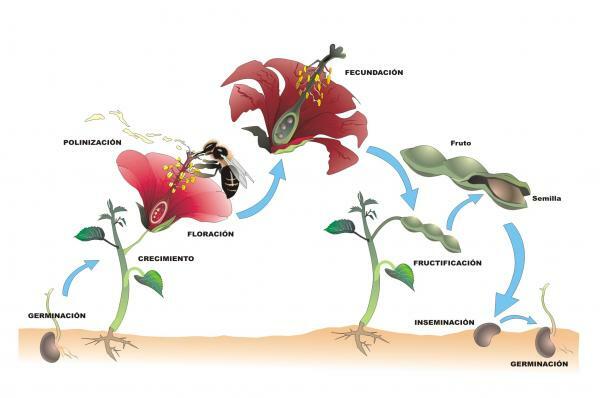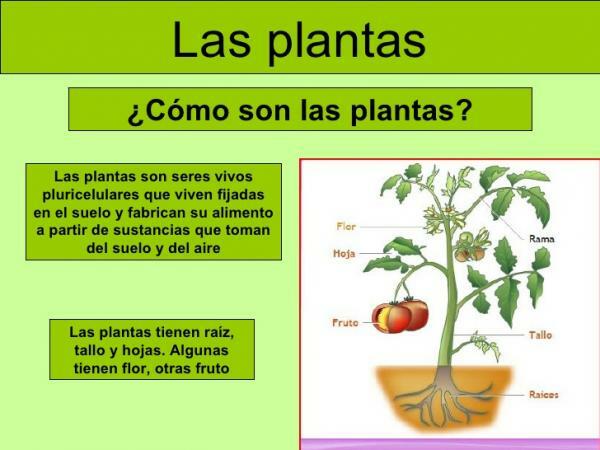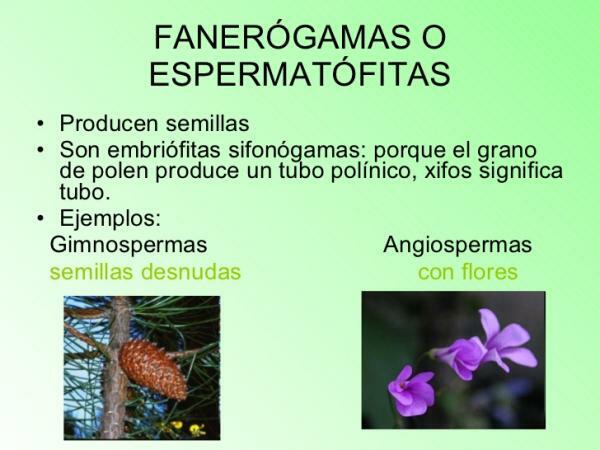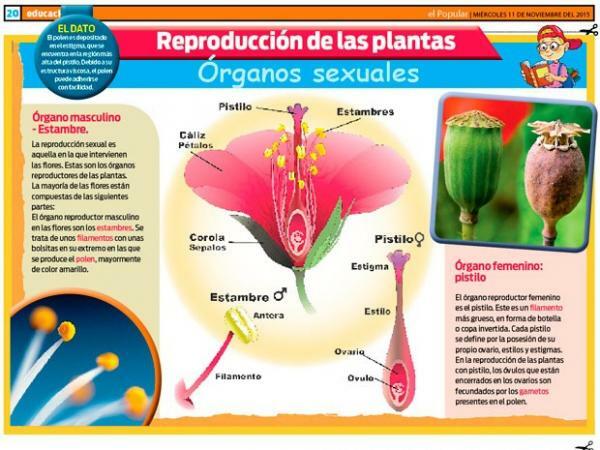Reproduction of flowering plants

Image: Educere Project - WordPress.com
Our world is full of a large number of living beings, grouped in groups with very different characteristics from the rest, which never cease to amaze us. One of these groups is that of plants, a very versatile division, which can have great changes between one species and another. An example of this is the reproductive facet, there are many different forms of reproduction in the case of plants. For all this in this lesson from a TEACHER we are going to talk about reproduction of flowering plants.
Index
- What are plants?
- What are Phanerogamic Plants?
- The reproductive process of flowering plants
What are plants?
Before starting to talk about the reproduction of flowering plants, we must define the living beings that we call plants to know the types that exist and the different types of reproduction that they can achieve.
Plants are living beings characterized by not having the ability to move, perform
photosynthesis and have their cell walls made of cellulose. It is difficult to speak of common characteristics of all plants, because there are more than 300,000 species of plants, of which the vast majority produce flowers, with a myriad of unique characteristics among so many species.The large number of species causes that there is a great variety of breeding classes between the different plants, being able to reproduce both asexually and sexually. The type of reproduction can depend on many factors, such as the climate or the type of species.
The classification of plants is carried out depending on the parts that a plant has or does not have, grouping the plants into two large groups that are the following:
- Plants without flowers: are those plants that do not have flowers, dividing into bryophytes Y pteridophytes.
- Plants with flowers: are those that have flowers, being able to be gymnosperms or angiosperms.
In this other lesson we will discover the parts of a flower and their functions.

Image: Slideshare
What are Phanerogamic Plants?
Phanerogamic or spermatophyte plants are all those plants that can produce seeds, basing its reproduction on these. Its reproduction takes place in sexual structures called flowers who are responsible for producing seeds for the creation of new beings.
Within the phanerogams there is a small subdivision, since the plants of this group can be gymnosperms or angiosperms. The former are characterized by having their seeds exposed, so there is no fruit to protect them, and they are found outdoors. On the other hand, angiosperms are characterized by having a series of leaves that protect the seed for a time, to later become protected by the fruit.
To finish understanding what are the phanerogams, this type of plants that they reproduce thanks to the flowers, we must talk about some of its characteristics. Some of these characteristics are the following:
- They can reproduce both sexually and asexually.
- Some of the phanerogamic plants are hermaphrodites, being able to produce both sperm and eggs.
- They are made up of stem, root, leaves and flowers, thanks to which they perform the vital functions of living beings.
- They are capable of bearing fruit.
- They can be both terrestrial and underwater, although most live in terrestrial areas.
- Many of them are part of the daily life of the human being, being able to produce food such as fruit, elements to produce clothes, or serve as ingredients for medicines.

Image: plant and animal morphology
The reproductive process of flowering plants.
Flowering plants, the so-called phanerogams, can reproduce both sexually and asexually thanks to flowers, but in most cases they usually use sexual reproduction. To know the reproductive processes of this class of plants, we must talk about the different phases they go through, until they create a new being.
These phases are as follows:
- Pollen production: Pollen grains are the male sex cells of this type of plant, which are created in the anthers, the highest area of the stamens.
- Pollination: It is the process by which pollen grains are transported to the pistil of another flower. Pollination can be of two types, depending on whether it is carried out by the wind or an insect. Wind pollination is the process by which the wind takes the excess pollen and carries it to another flower, usually small flowers. Insect pollination is where insects feed on flower pollen, but are there are some remains that are transported to other flowers, this type of pollination occurs in flowers more beautiful.
- Fertilization: The pollen grains, or male sex cells, are transported to the pistil of another flower, which is the female part of the flower. It is in the pistil where the ovum of the plant is fertilized.
- Fruit formation: After fertilization, the plant undergoes a series of changes. The ovule turns into a seed, inside which is the embryo, and the ovary turns into a fruit.
- Germination: The seed and the fruit evolve, the seed falls to the ground and there it can create a new plant, if the conditions are good enough.

Image: ElPopular.pe
If you want to read more articles similar to Reproduction of flowering plants, we recommend that you enter our category of biology.

